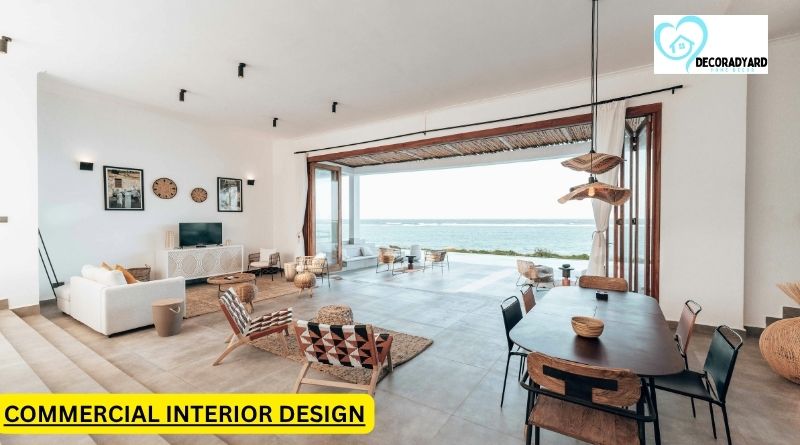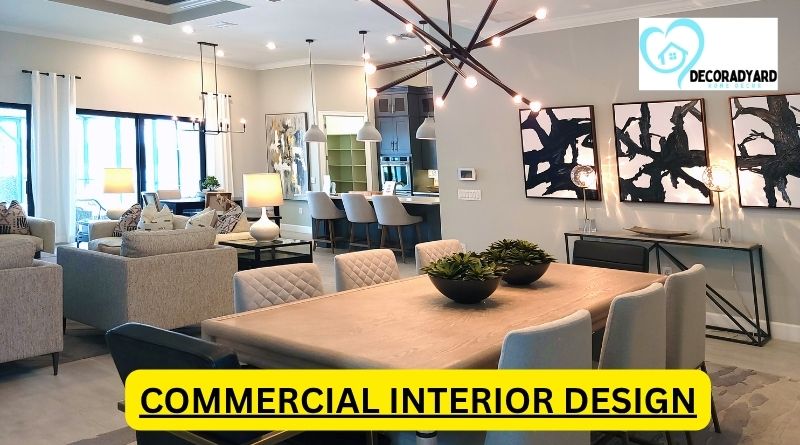In today’s competitive business environment, commercial interior design plays a crucial role in shaping the image of a company. More than just aesthetics, it is about creating a space that enhances productivity, improves employee well-being, and leaves a lasting impression on clients. Every detail, from furniture placement to lighting, contributes to the overall atmosphere, making commercial interior design a strategic investment rather than a mere decorative choice.
The Importance of Commercial Interior Design
Commercial interior design is not just about choosing colors or stylish furniture. It is a thoughtful approach to designing spaces where employees spend a significant portion of their day. A well-designed commercial space can improve employee morale, reduce stress, and foster collaboration. For businesses that rely on client interactions, such as offices, hotels, and retail stores, the design of the interior space can influence customer perceptions and buying decisions. It reflects the brand identity and communicates professionalism, creativity, and attention to detail.
Moreover, commercial interior design is crucial for optimizing space utilization. Companies often face challenges in accommodating large teams within limited square footage. Strategic planning and design ensure that every inch is functional, comfortable, and visually appealing. From open-plan layouts that encourage teamwork to private meeting rooms for confidential discussions, the design must balance functionality with aesthetics.
Key Elements of Effective Commercial Interior Design
Several elements define the success of commercial interior design. Firstly, color schemes have a psychological impact on employees and visitors alike. Warm tones can create a welcoming atmosphere, while cooler shades promote focus and calmness. Secondly, lighting is a critical factor. Natural light boosts productivity and mood, whereas artificial lighting must be carefully planned to reduce eye strain and enhance visibility.
Furniture selection and layout also play a significant role. Ergonomic furniture ensures comfort and health for employees, while the placement of desks, chairs, and communal areas encourages collaboration and communication. In addition, the choice of materials and textures influences both aesthetics and functionality, ensuring durability and easy maintenance in high-traffic areas.

Technology integration is another essential aspect of modern commercial interior design. Smart lighting systems, interactive displays, and wireless connectivity enhance the efficiency of the workspace and provide a seamless experience for both employees and clients. When technology is integrated thoughtfully, it complements the design without overwhelming the environment.
Benefits of Investing in Commercial Interior Design
Investing in professional commercial interior design offers multiple advantages. Firstly, it can significantly increase productivity by creating an environment that motivates employees. A well-organized workspace reduces distractions, enhances focus, and promotes a culture of efficiency. Secondly, it improves brand perception. A visually appealing and functional space demonstrates that the company values quality and professionalism, which can positively influence client relationships.
Furthermore, commercial interior design enhances sustainability. By using eco-friendly materials, energy-efficient lighting, and optimized layouts, businesses can reduce operational costs while contributing to environmental conservation. This approach aligns with the growing demand for sustainable practices, reflecting the company’s commitment to responsible operations.
Finally, a thoughtfully designed commercial interior can increase employee retention. Comfortable and engaging workspaces make employees feel valued, which boosts job satisfaction and reduces turnover. In a market where talent retention is a challenge, this is a strategic advantage that goes beyond aesthetics.
Conclusion
In conclusion, commercial interior design is a vital component of modern business strategy. It goes beyond decorating a space; it involves creating environments that are functional, aesthetically pleasing, and aligned with the company’s goals. From enhancing employee productivity to leaving a lasting impression on clients, the benefits of professional interior design are undeniable. Businesses that invest in this aspect not only elevate their brand image but also cultivate a work culture that inspires efficiency, creativity, and satisfaction. By prioritizing thoughtful design, companies can transform ordinary spaces into extraordinary experiences that drive success.



